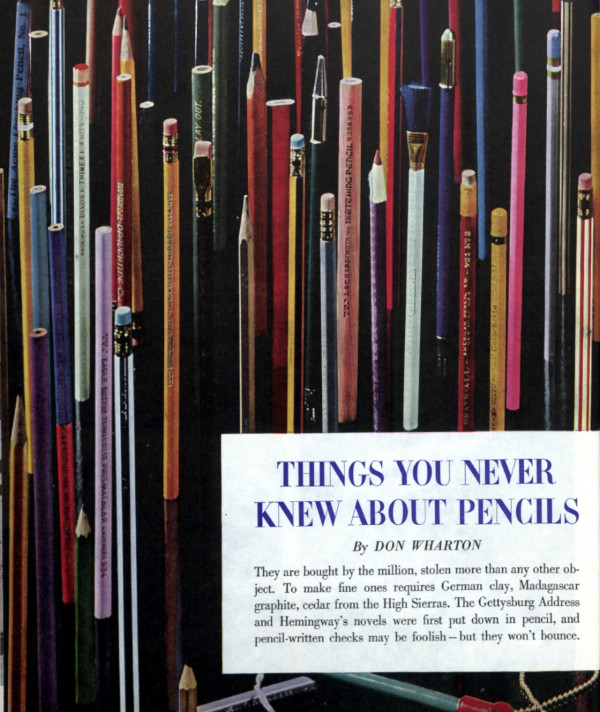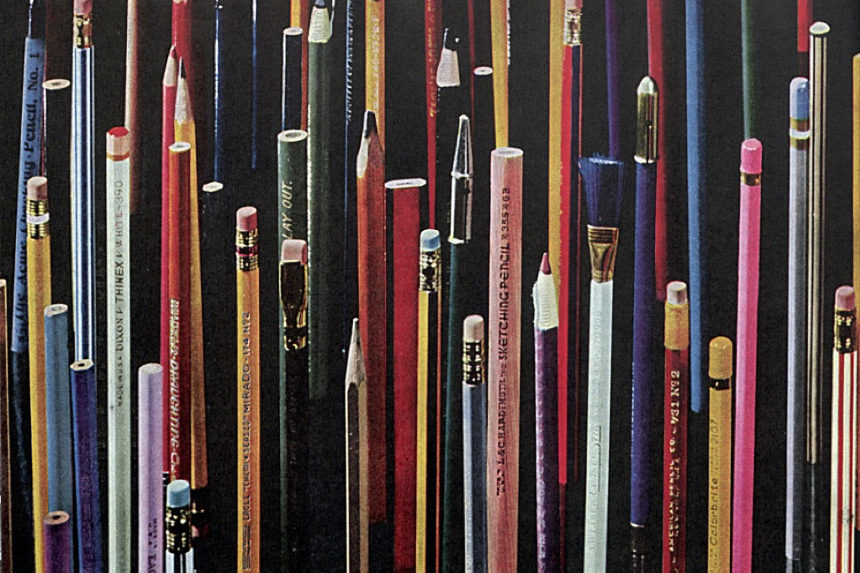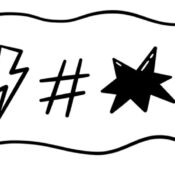How much do you know about the humble pencil? In 1953, writer Don Wharton took a deep plunge into everything No.2 in the article, “Things You Never Knew about Pencils”: why people say they are made of lead even though they never were (and that’s not rubber at the other end, either); which famous authors wrote with a pencil, one pressing so hard that he wore a groove in his finger; and whether Abraham Lincoln wrote the Gettysburg Address using pen, or pencil, or both. He tells us when they were first painted yellow, and when the graphite went from square to round. Despite its long and storied history, the pencil rarely received the respect it deserved. Penciled contracts and checks were viewed with suspicion, and, notes Wharton: “Even back during the Civil War, Union soldiers writing letters home would rarely use a pencil except during periods of active campaigning. Confederates paid three dollars a bottle for ink or made their own from pokeberries, rather than write home with a pencil.”
You might think that pencils are dying a slow and uncelebrated death, now that everyone has a digital keyboard in their pocket. But the pencil persists. According to MarketingStrategy.com, “sales of pens and pencils worldwide are approaching $20B, growing about 3% annually.” School children are still required to bring pencils to class (along with a computer) and most office workers have a drawerful of them in varying states of length, sharpness, and nibbled-on-ness. The pencil may play a modest role in your life, but don’t write it off quite yet.

Featured image: Photo by George Lazarnick (©SEPS)
Become a Saturday Evening Post member and enjoy unlimited access. Subscribe now




Comments
Great article. I still love Dixon Ticonderoga soft # 2 pencils best when one is needed.
The thickness of a pencil is very suitable for writing Chinese characters,
for example: 鉛筆 (pencil).
Maybe it’s conical like a brush?
So, you can outline that line. (I had to learn brush in the primary school.)
I also need a pencil to learn English now, for the convenience of correction.
Mechanical pencils easily break the refill.